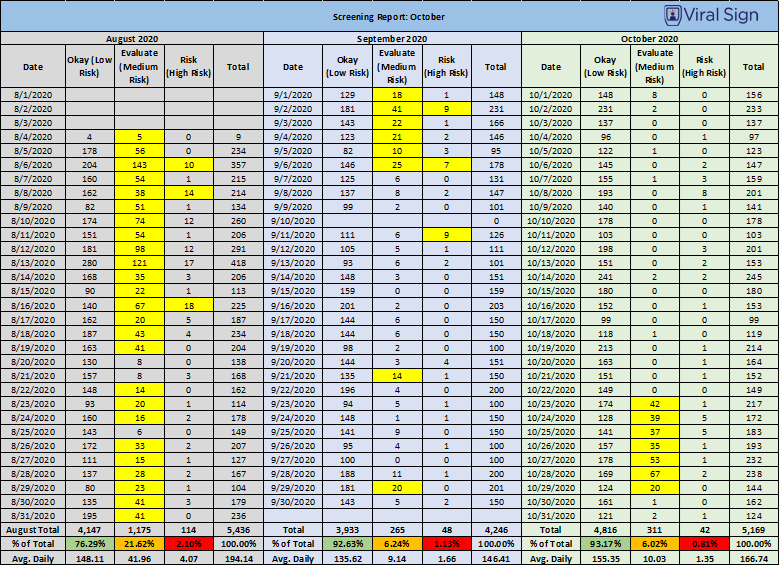When we last spoke to Viral Sign by the Numbers, we shared the insights gained from analyzing the broad trends in screening results across countries and regions. For clients, Viral Sign provides real-time, weekly, and month-end screening summaries. At the client level, the insights gained from changes to the patterns in the screening result can be quite informative.
In the example above, taken from results in a senior living setting, the dramatic drop in the Evaluate and Risk cohorts (from a combined 23.72% in August to a combined 6.83% in October) is consistent with the significant decrease in the combined percentages for the Evaluate and the Risk group domestically and globally. As we enter deeper into Fall, the expectation is that the combined effect of the return to a higher incidence of COVID and the increased incidence of influenza will drive the combined results for the Evaluate and Risk cohorts north or 12%. It is expected that the Risk cohort will remain between 1% and 2% as individuals with fever seem to self-select out of the screening process as they understand they have a fever. This places increased importance on understanding the shifting patterns in the Evaluate cohort, which is where, using Viral Sign, we find individuals in the presymptomatic state.
And, though the month-end data is very informative at a high level, it is also important to examine patterns in the screening data by visiting the daily results. The daily results provide insight into specific days and weeks where the screening results were highly differentiated for the norm for the month. The outlier dates for the facility are highlighted in yellow below.
So, where do we go from here? We will continue to monitor the screening data at the global, domestic, regional, and client level. Our aim is to translate the data, and specifically the patterns in the data, into actionable intelligence so that we can bring increased attention to periods when the risk of virus transmission is elevated. In this respect, the aim for Viral Sign is to support early identification of infection disease in the individual AND early identification of elevated risk for the client.


